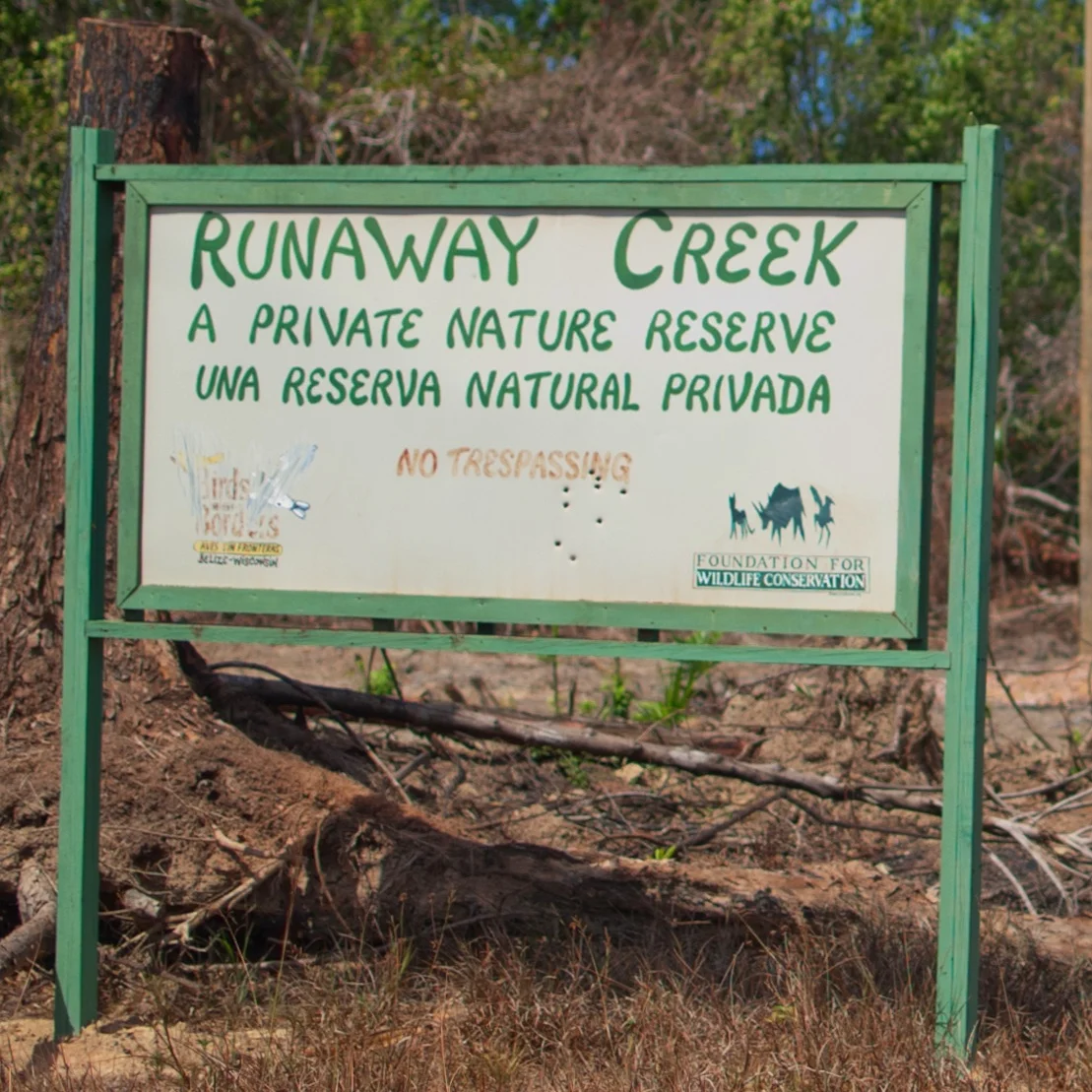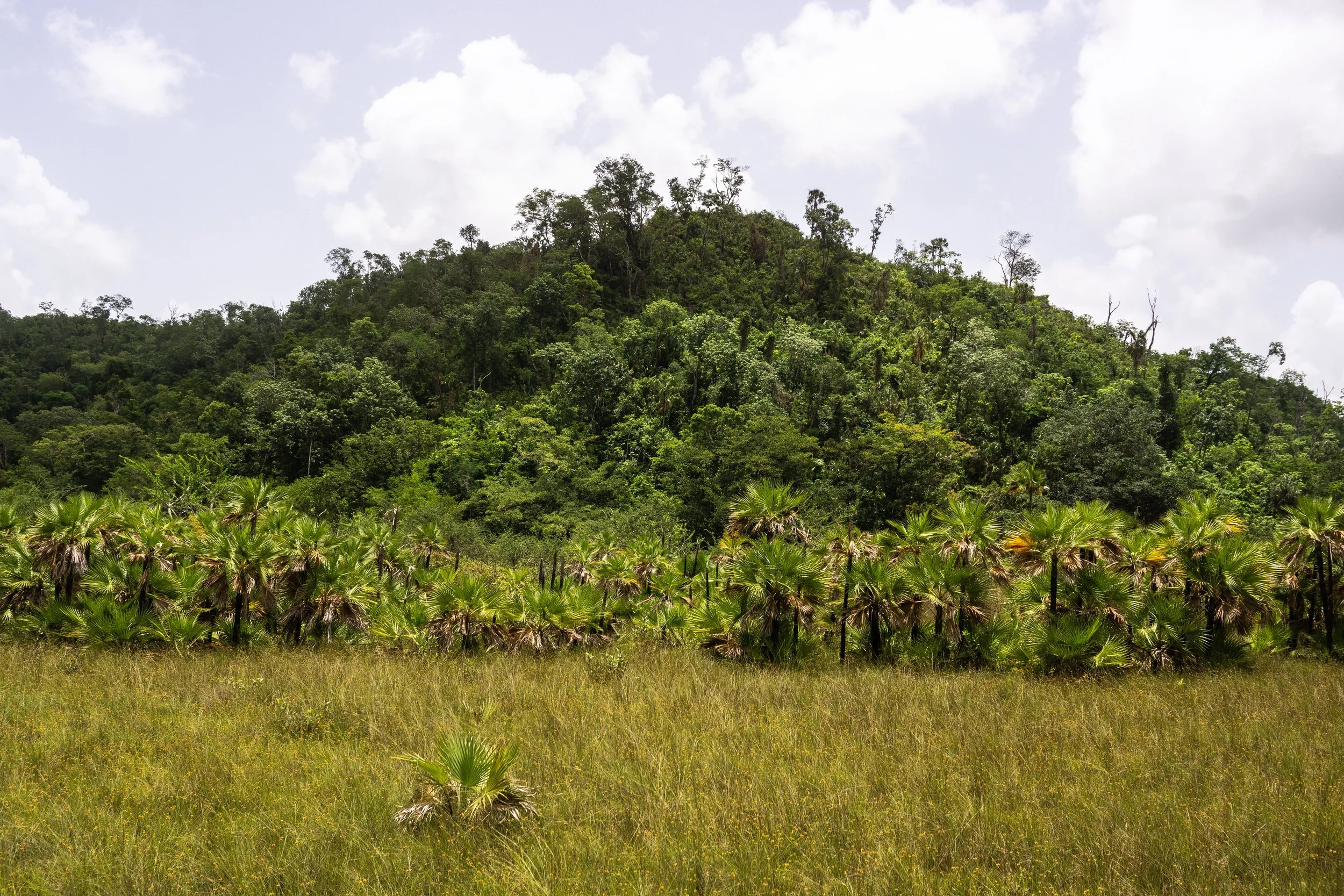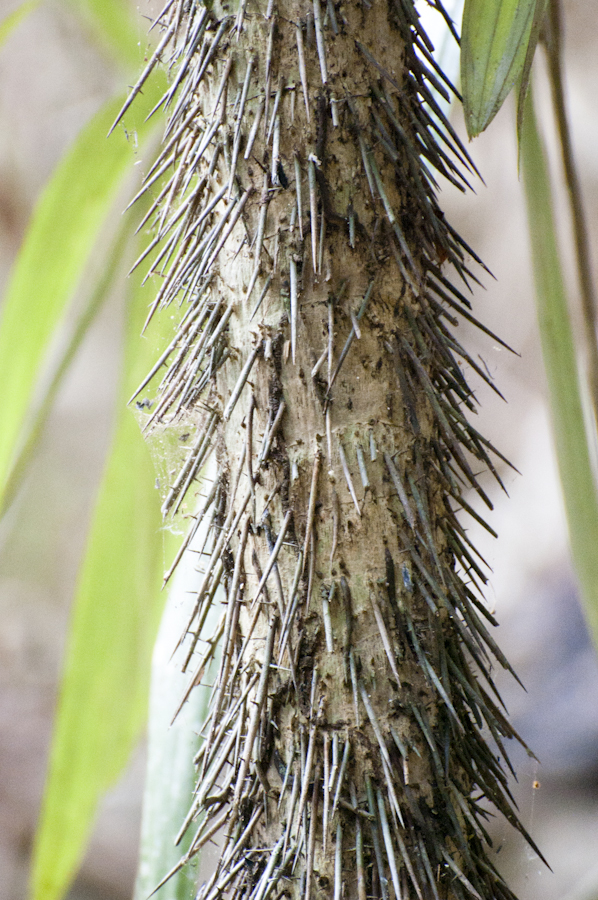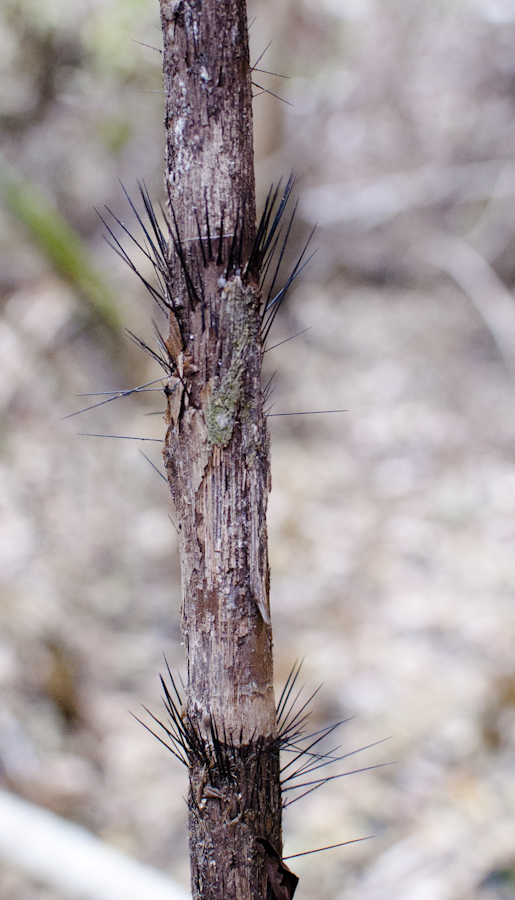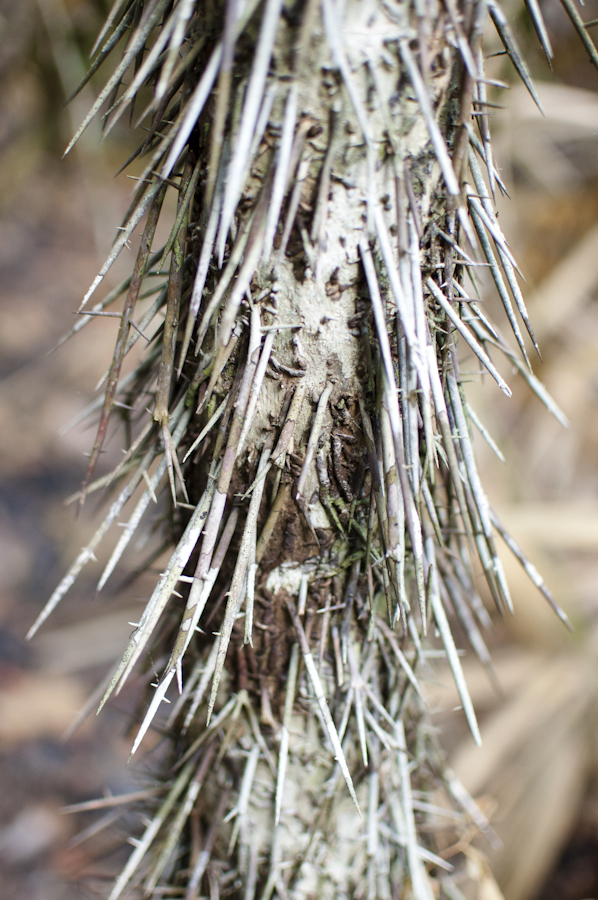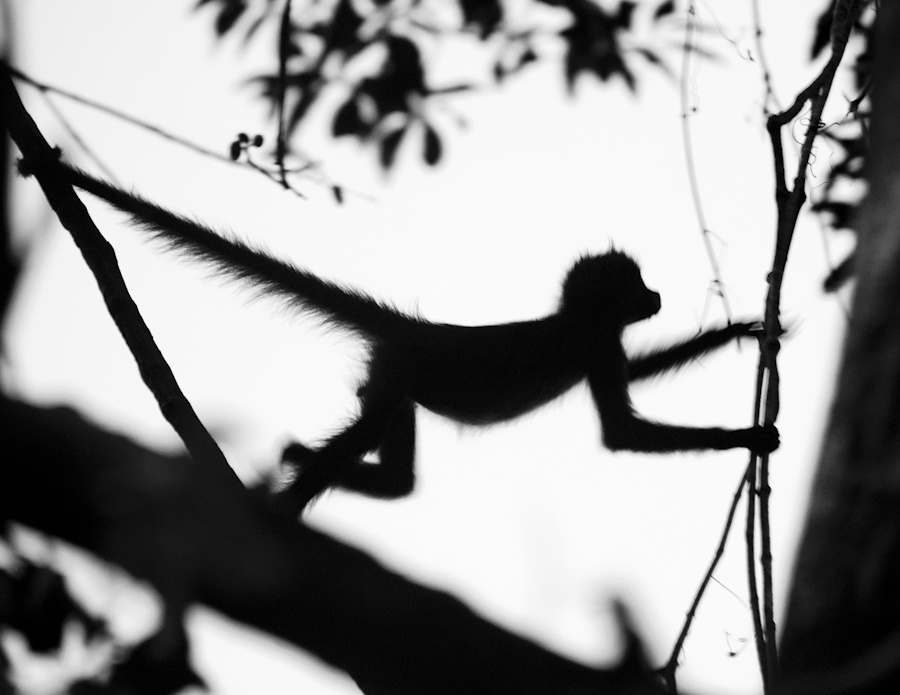I jumped down off the side of the truck where I’d just buckled on snake leggings for the first time. I scrambled to get my pack on - it was over-full with water and bug spray - and followed Kayla Hartwell, Jane Champion, and Mary Pavelka along the trail across the savannah towards the wall of trees ahead of us. We were in Runaway Creek Nature Reserve in Belize. I’d just met them all and was desperate to appear confident. Ten steps from the truck, Mary turned and looked me up and down - “Your snake leggings are on backwards,” she said, “the buckles should face outward so they don’t catch when you walk”. Obviously. I fixed them and caught up as Kayla disappeared into the shade of the trees first. It was my first time in a rainforest, carrying my first camera, hoping to see my first spider monkey, making my first attempt to be an adventure scientist. All I could think was, “What am I doing here and how big a mistake is this?”
Looking out at Runaway Creek from inside one of the caves. When I first saw this, I realized that this is what I meant by ‘Adventure Science.’
“What am I doing here and how big a mistake is this?”
In the waning months of my doctorate, I knew that I loved science but not in the context of having my own lab. I didn’t know what it looked like but I wanted something that involved science, writing, travel, and adventure. I wanted to mash them all together somehow so I started calling it “Adventure Science” and hoped that I could make it up as I went along.
I contacted Dr. Mary Pavelka, a professor of anthropology at the University of Calgary because I’d heard that she did field work in Belize. I explained that I had zero experience with science writing, had never been to the field before, wasn’t exactly sure what “the field” meant, nor what I wanted out of this. She took a chance and invited me to go with her to Belize a few days later. So I did.
On the flight, Mary prepped me to meet her graduate students, Kayla and Jane, who were both studying spider monkey population dynamics in Runaway Creek. She’d told them to be on their best professional behaviour because a “real” science journalist was coming to visit. I still cringe at the thought, considering how intimidated I was by everyone and everything.
I met Kayla and Jane at breakfast the next day on my first morning in Belize and marvelled at how relaxed they sounded as they discussed our route, which group of monkeys we’d look for, and the state of the forest after a recent hurricane. We grabbed coffee and headed down the Coastal Highway - a washboard, gravel road toward Runaway Creek.
The truck kicked up clouds of red dust as we approached the jagged hills that mark the border of nature preserve. We veered off the main road onto a track and Kayla navigated deep, water-filled ruts and mud pits to the base of the hills where the savannah ends at a seemingly impenetrable wall of trees.
The savannah leading up to one of Runaways hills. The hill is bigger than it looks and the forest is almost impenetrable in some places.
“So what part of the jungle is this?” I asked, a useless question but I was trying to sound like what I thought a journalist should sound like. “We don’t call it a jungle,” Kayla said, “it’s a rainforest.” Right.
We all grabbed snake leggings from the back of the truck. The fer-de-lance, they told me, was the deadly venomous snake we were protecting against. They talked about all the ones they’d seen recently as I did up the straps on the thick, wire mesh gators (on the wrong legs as I soon discovered). I grabbed my new backpack, filled with my newly-acquired camera gear, and my new binoculars.
“All right, this is it - adventure science,” I thought. Kayla, Jane, and then Mary pushed through a curtain of giant leaves to enter the rainforest and I followed.
“See this tree,” Kayla said turning to me, “don’t touch it, it’s a Black Poisonwood. Or this one - the spikes will go through your hand. Watch where you’re stepping but also look up for monkeys.” Clear instructions - look up and down simultaneously and don’t touch anything.
Lots of trees here either have protective spikes on the trucks, some as long as your fingers, or poisonous bark. Be careful which ones you touch.
I’m normally sure-footed but tripped over every vine and fallen palm frond and I was sure everyone was rolling their eyes. Suddenly, I glimpsed something moving high in a tree and I yelped, “Monkey!” We all put our binoculars up. “That’s a tamandua, Sarah, a type of anteater,” said Kayla. We watched it creep along a branch and Kayla pointed out that you can recognize them because of “their little sweater vests” - the pattern of colouring on their backs. A good find, but not a monkey.
Kayla and Mary looking for monkeys.
A few minutes later, I really did see a monkey and pointed it out more sedately this time. “That’s Fanta,” said Jane - there are dozens of monkeys in this group and Kayla and Jane have named and can recognize every one. Fanta, a young female, stared at us, her long tail coiled around a branch in the fig tree. She swung down until she was just a few metres away. “Wow,” said Kayla, “you’re going to get the best photos here, they don’t often come this close!”
I removed the lens cap, switched the camera on, raised it to my eye, focused, and pressed the button. Nothing. No shutter click. I tried again. Again, nothing. An image of my camera’s battery still sitting in its charger flashed before me. I’d forgotten to put the battery in. I froze and continued to hold the camera up as Mary and the others exclaimed behind me about my “beginner’s luck” and “what great photos I must be getting”. Fanta stared at me, posing beautifully. Futilely, I pressed the button a few more times. I didn’t say anything and gave an ambiguous nod-shrug when they asked if I was getting decent shots. The “real” science journalist couldn’t admit (that day, at least) that I’d screwed up so for the rest of the day, I faked taking photos. And that was my first day as an adventure scientist.
Thankfully, I’ve spent many more days at Runaway Creek and had plenty of adventures elsewhere since then. I learn new things and make new mistakes with each trip but every time I go somewhere, work with new scientists, take another photo, or write another story, I get a little closer to figuring out what an Adventure Scientist is.
I did eventually manage some shots of those spider monkeys, hundreds of them, in fact. I happen to like these ones.

